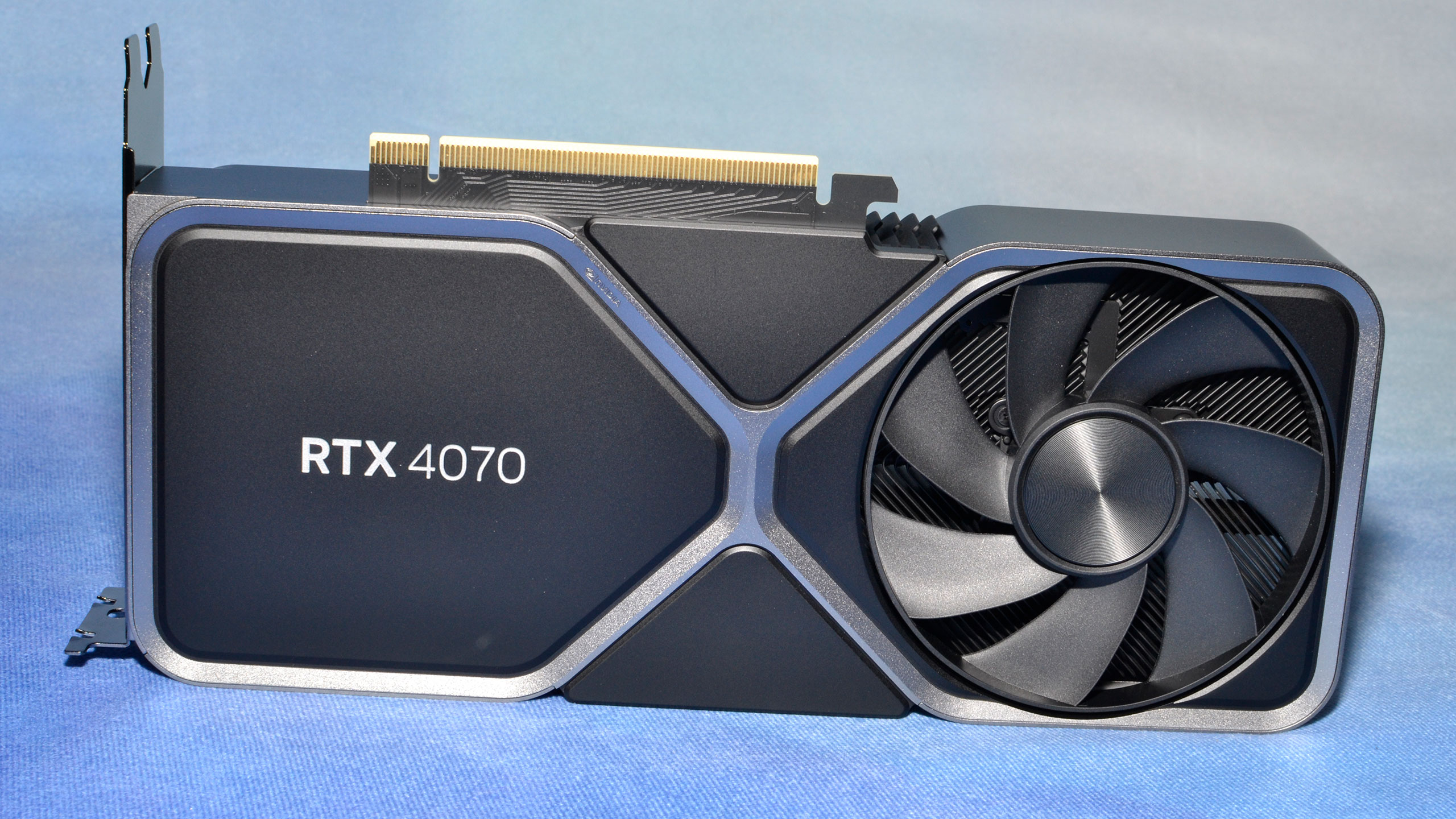Why you can trust Tom's Hardware
GPUs are also used with professional applications, AI training and inferencing, and more. Along with our usual proviz tests, we've added Stable Diffusion benchmarks on the various GPUs. AI is a fast-moving sector, and it seems like 95% or more of the publicly available projects are designed for Nvidia GPUs. Those Tensor cores aren't just for DLSS, in other words. Let's start with our AI testing and then hit the professional apps.
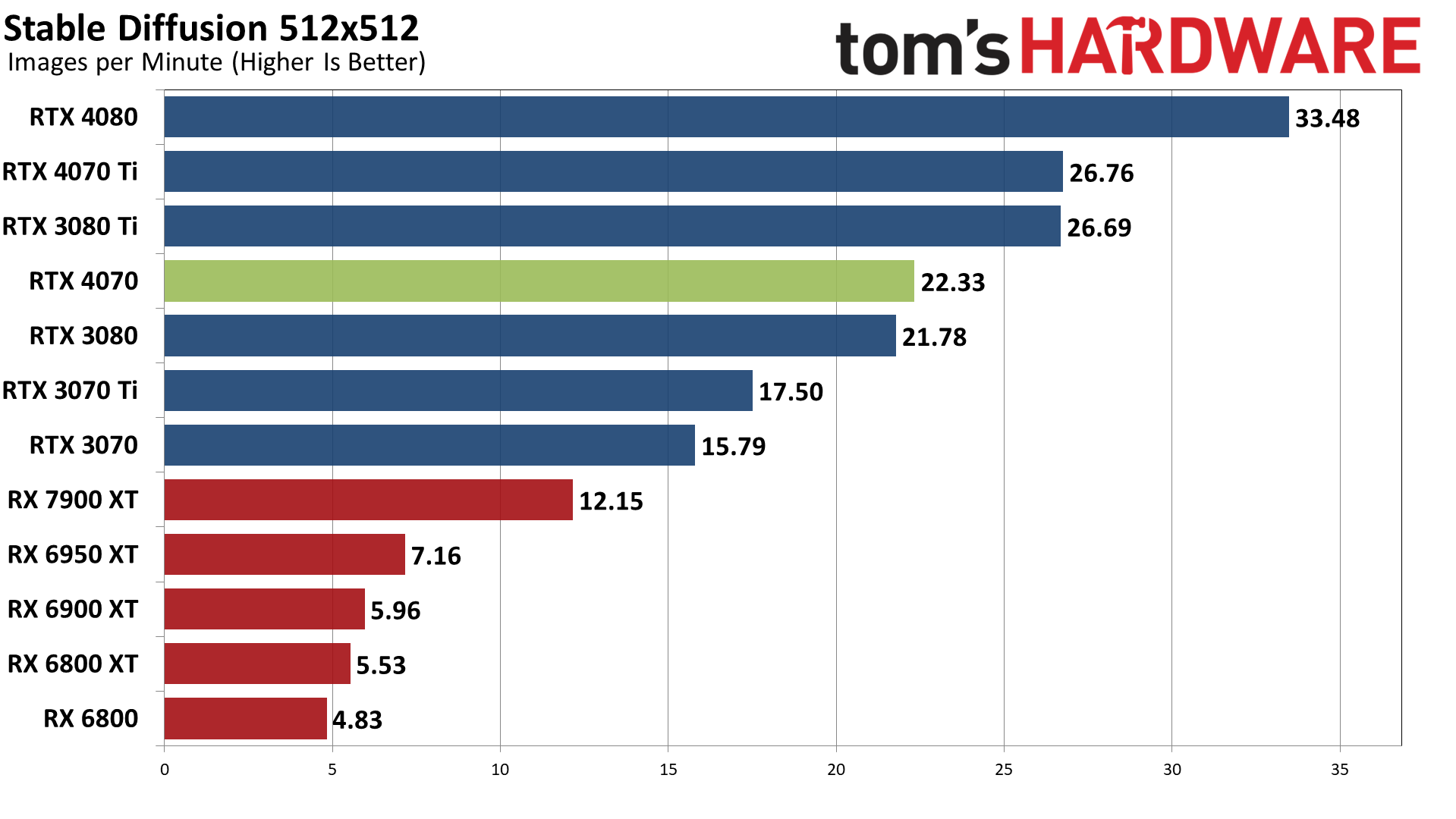
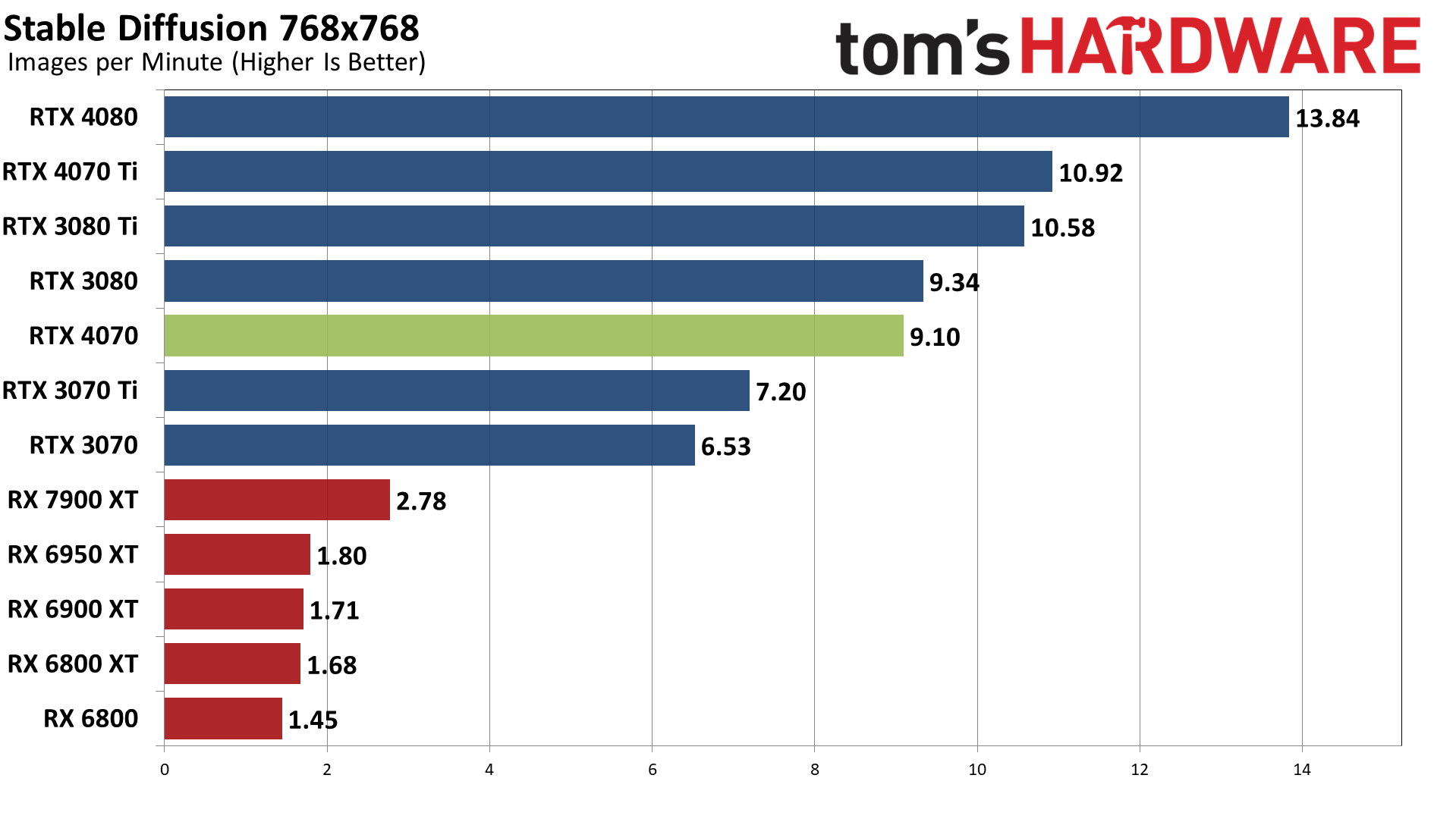
We've tested Stable Diffusion using two different targets: 512x512 images (the original default) and 768x768 images (HuggingFace's 2.x model). For Nvidia GPUs, mostly we find that the higher resolution target scales the time to render proportionally with the number of pixels: a 768x768 image has 2.25X as many pixels as a 512x512 image and so it should take about 2.25X longer to generate.
For AMD GPUs, Nod.ai's Shark repository offers the best performance we've found so far, but only if you're doing 512x512 images; 768x768 output cuts performance to about one-fourth the speed. And Intel? Yeah, I've got 512x512 working at a pretty decent rate (9.2 images per minute on the Arc A770 16GB), but I haven't managed to get 768x768 working yet.
If you're okay with 512x512 images, the RTX 4070 can crank out around 22 images per minute. That's 84% faster than AMD's RX 7900 XT, and that's not even trying to use the newer FP8 functionality (though Stable Diffusion might not benefit as much from that as other workloads, as it might need the additional precision of FP16). Moving up to 768x768 Stable Diffusion 2.1 images, the RTX 4070 still plugs along at over nine images per minute (59% slower than 512x512), but for now AMD's fastest GPUs drop to around a third of that speed.
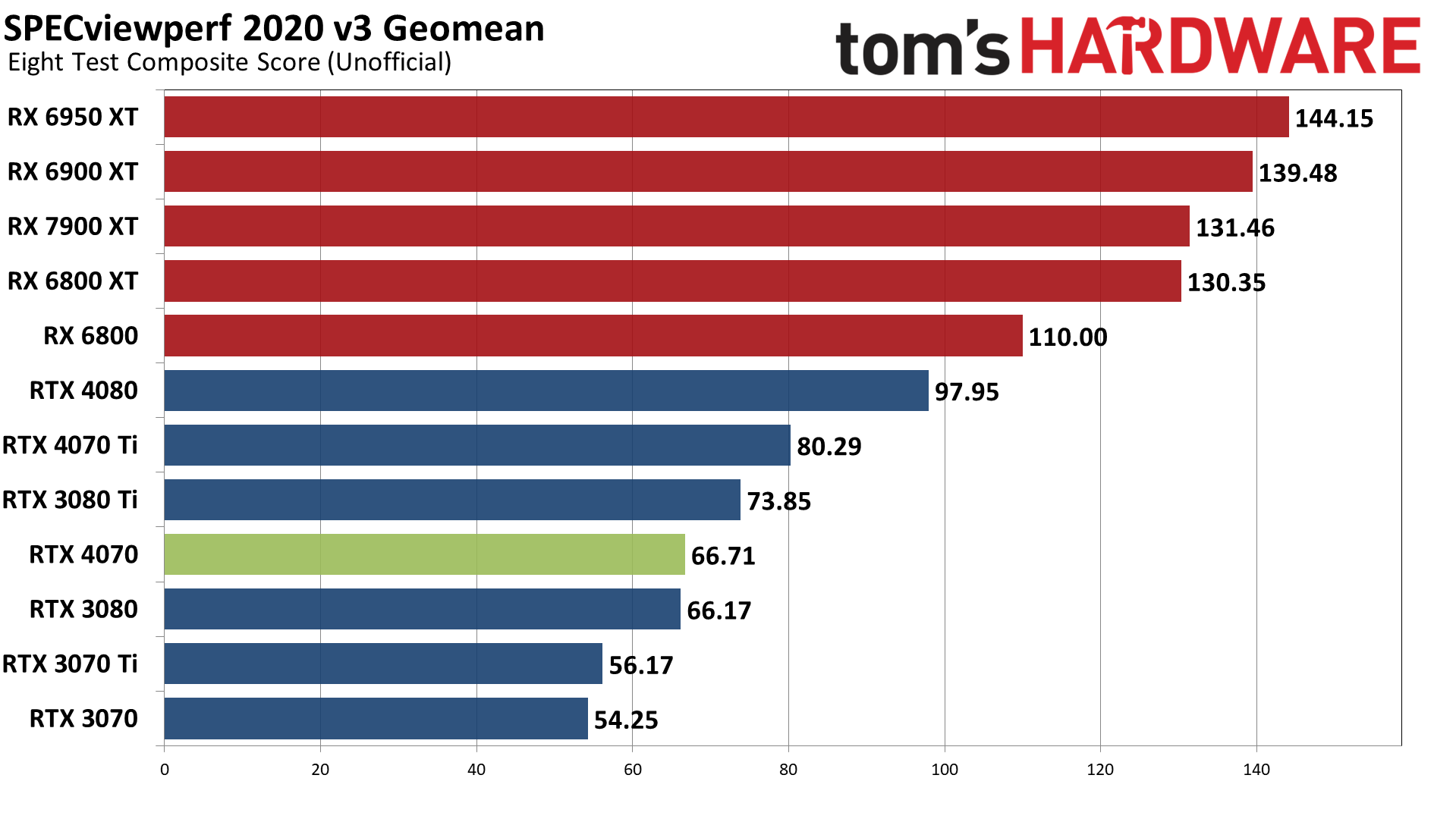

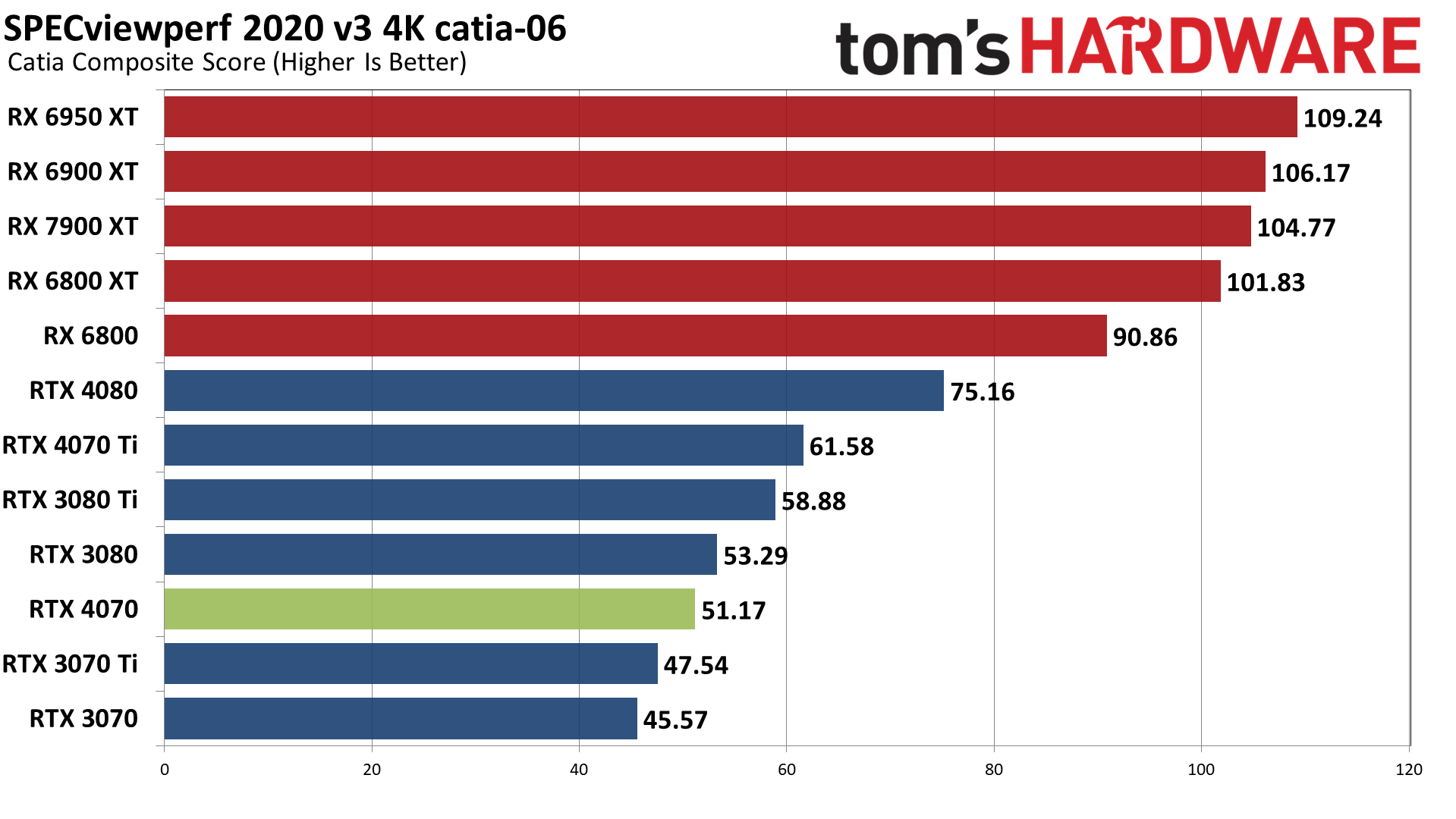

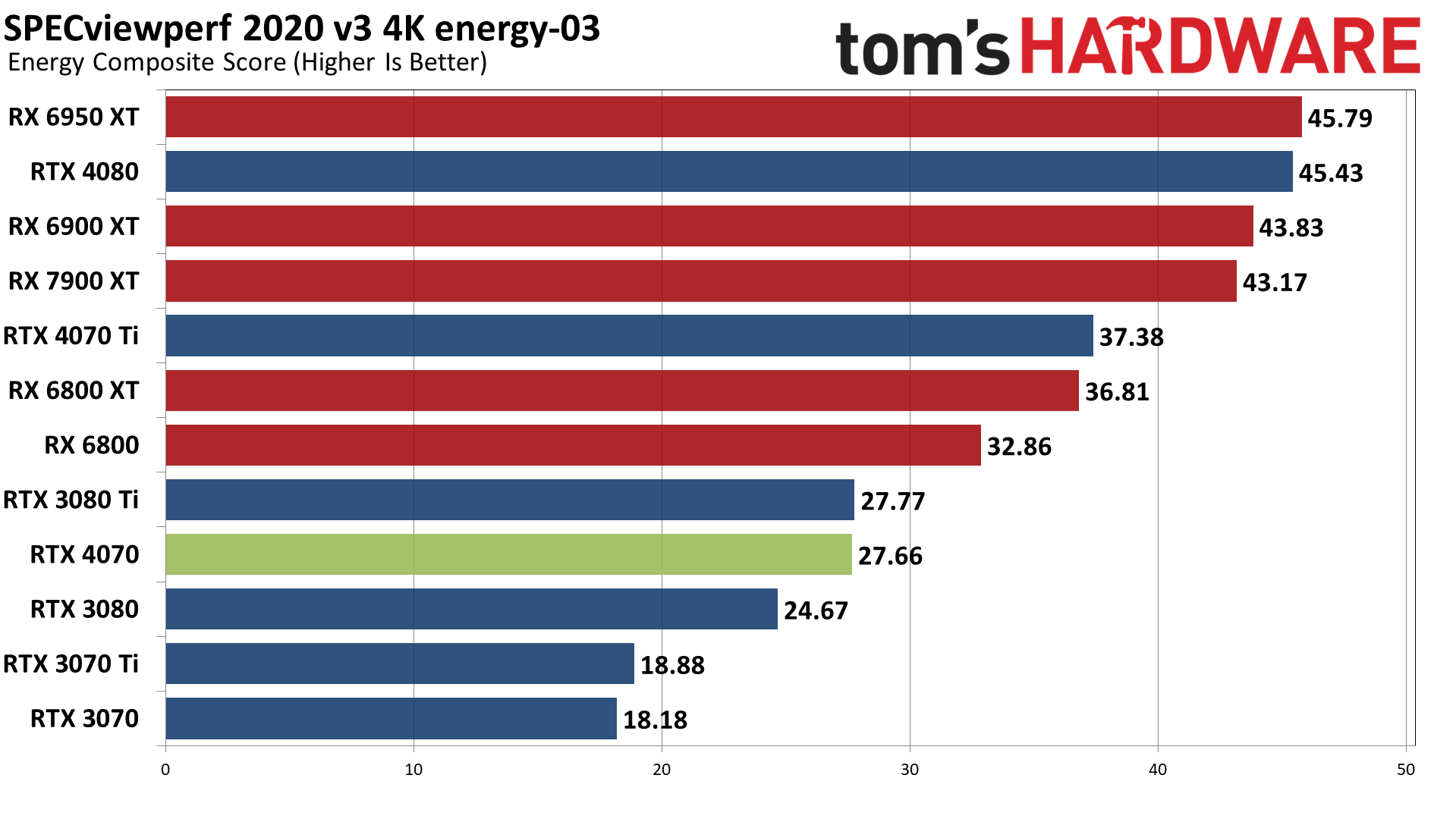
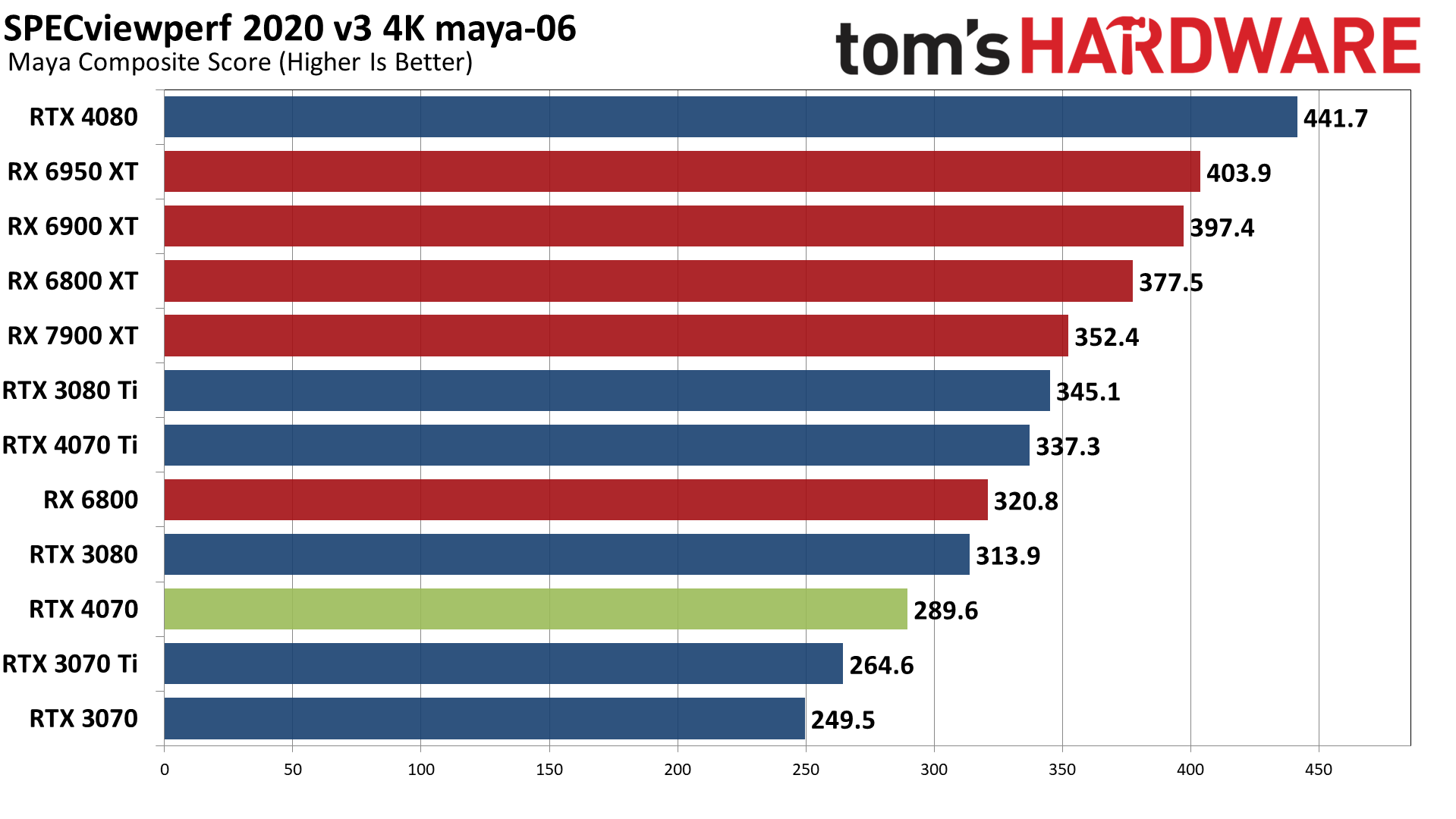

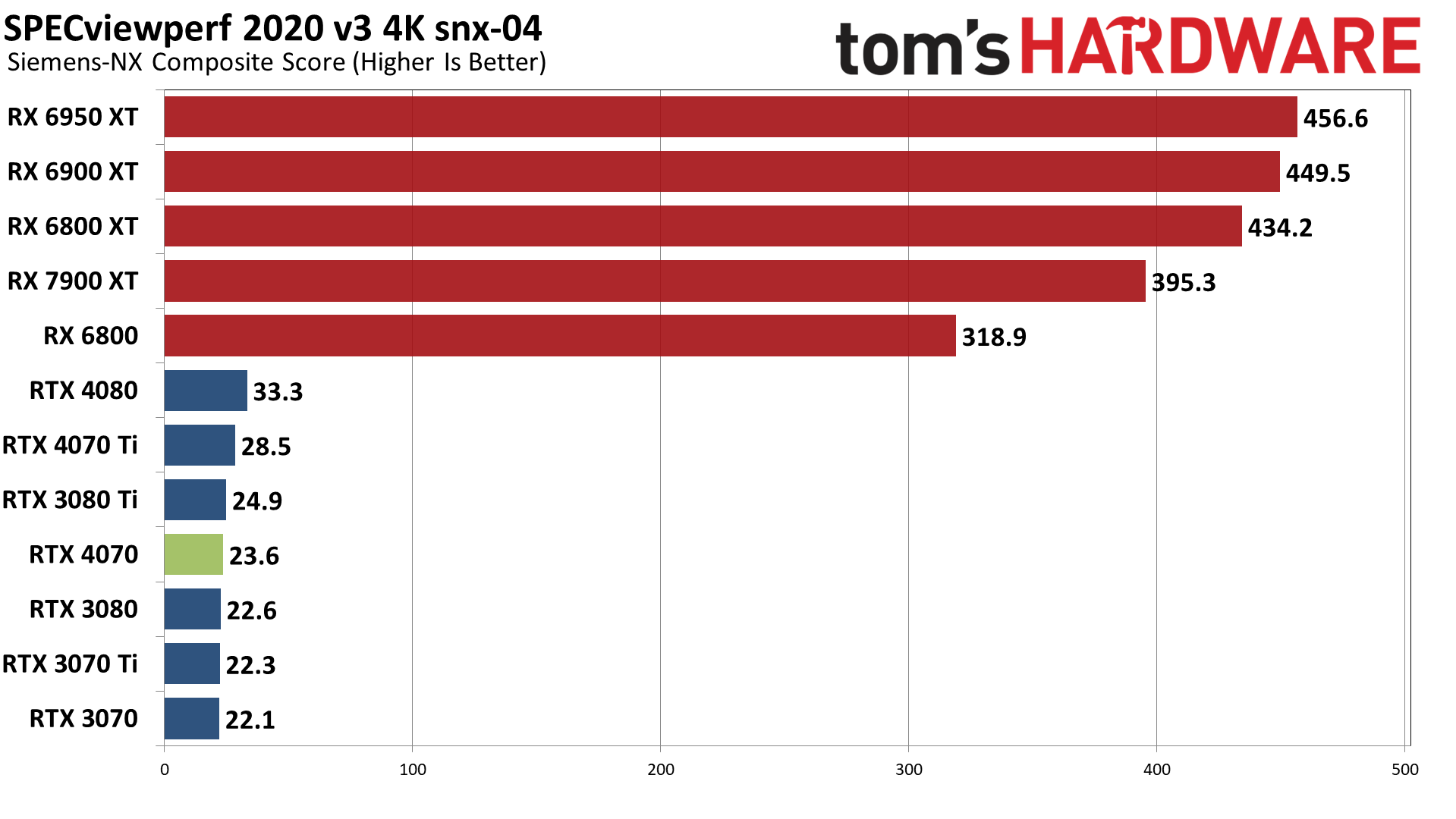
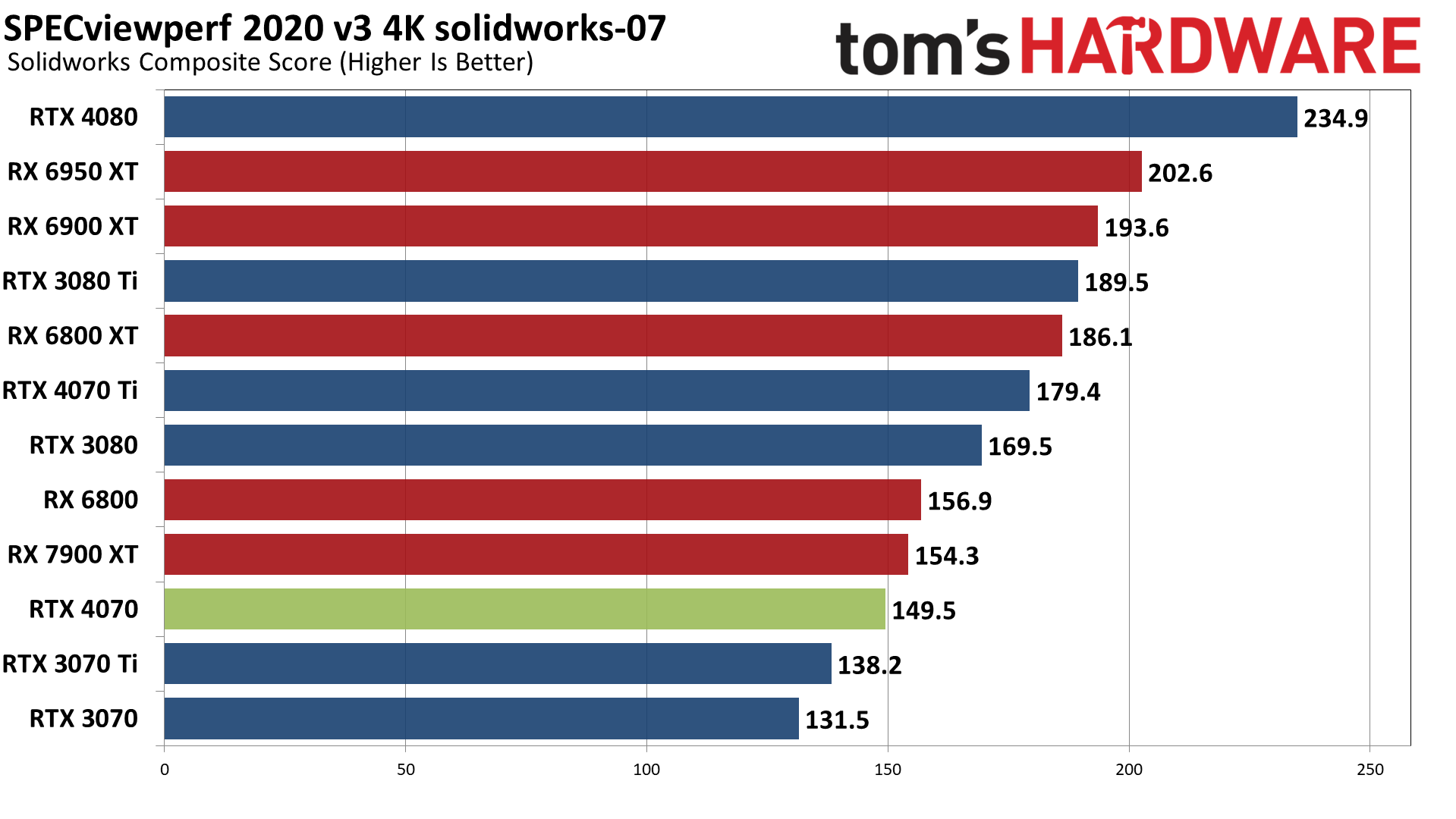
SPECviewperf 2020 consists of eight different benchmarks, and we use the geometric mean from those to generate an aggregate "overall" score. Note that this is not an official score, but it gives equal weight to the individual tests and provides a nice high-level overview of performance. Few professionals use all of these programs, however, so it's typically more important to look at the results for the application(s) you plan to use.
Across the eight tests, Nvidia's RTX 4070 basically ties the RTX 3080, just as we saw with our gaming performance results. AMD's more recent drivers provided a substantial boost to performance, something that you can really only match with Nvidia's professional series cards.
AMD score particularly well snx-04 (or if you prefer, Nvidia's consumer RTX cards do very poorly). AMD also tends to score higher in catia-06, creo-03, energy-03, and medical-03, while Nvidia GPUs do better in 3dsmax-07 — with maya-06 and solidworks-07 being more neutral. If you use any of these applications on a regular basis, that could be enough to sway your GPU purchasing decision.
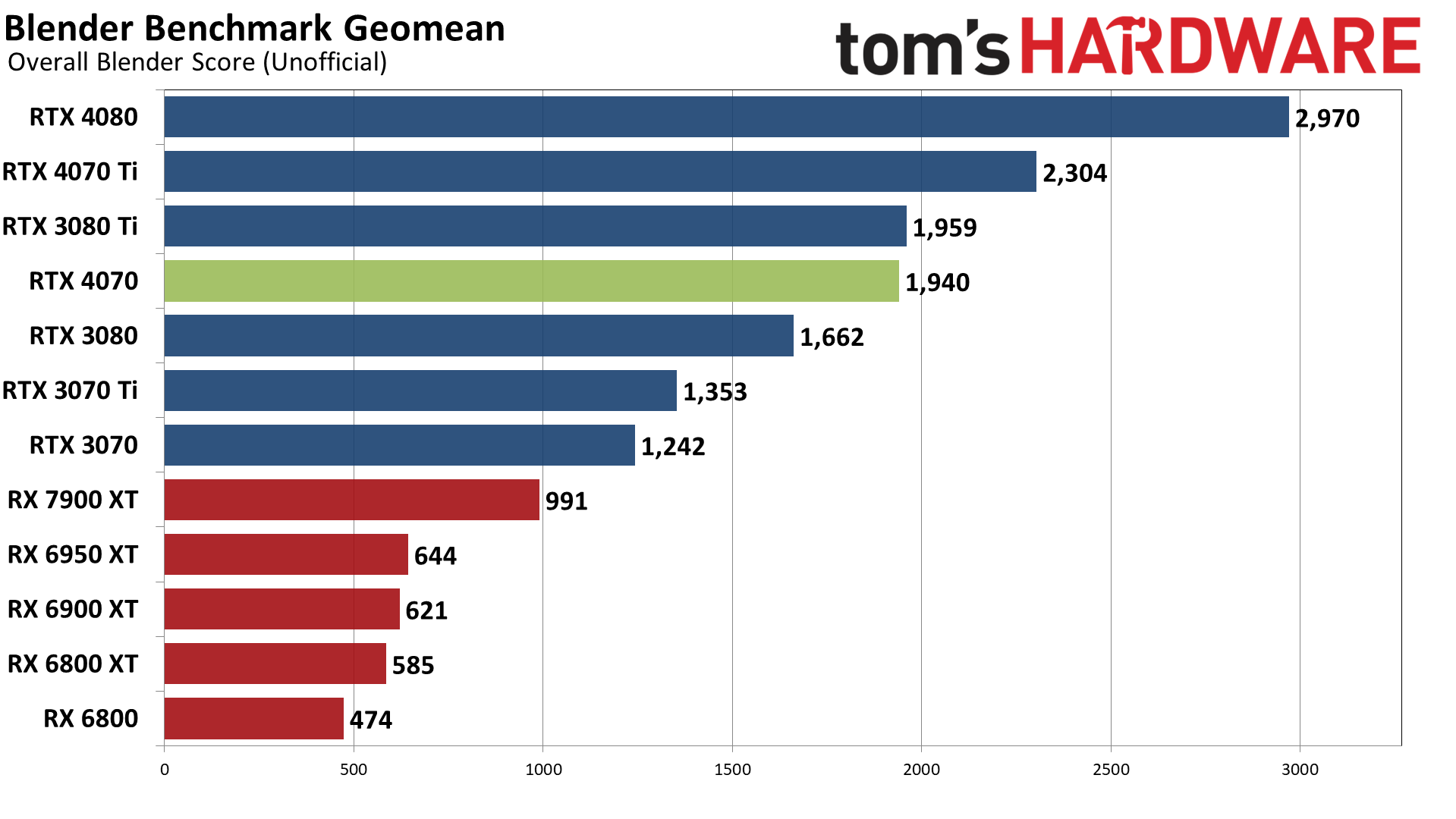
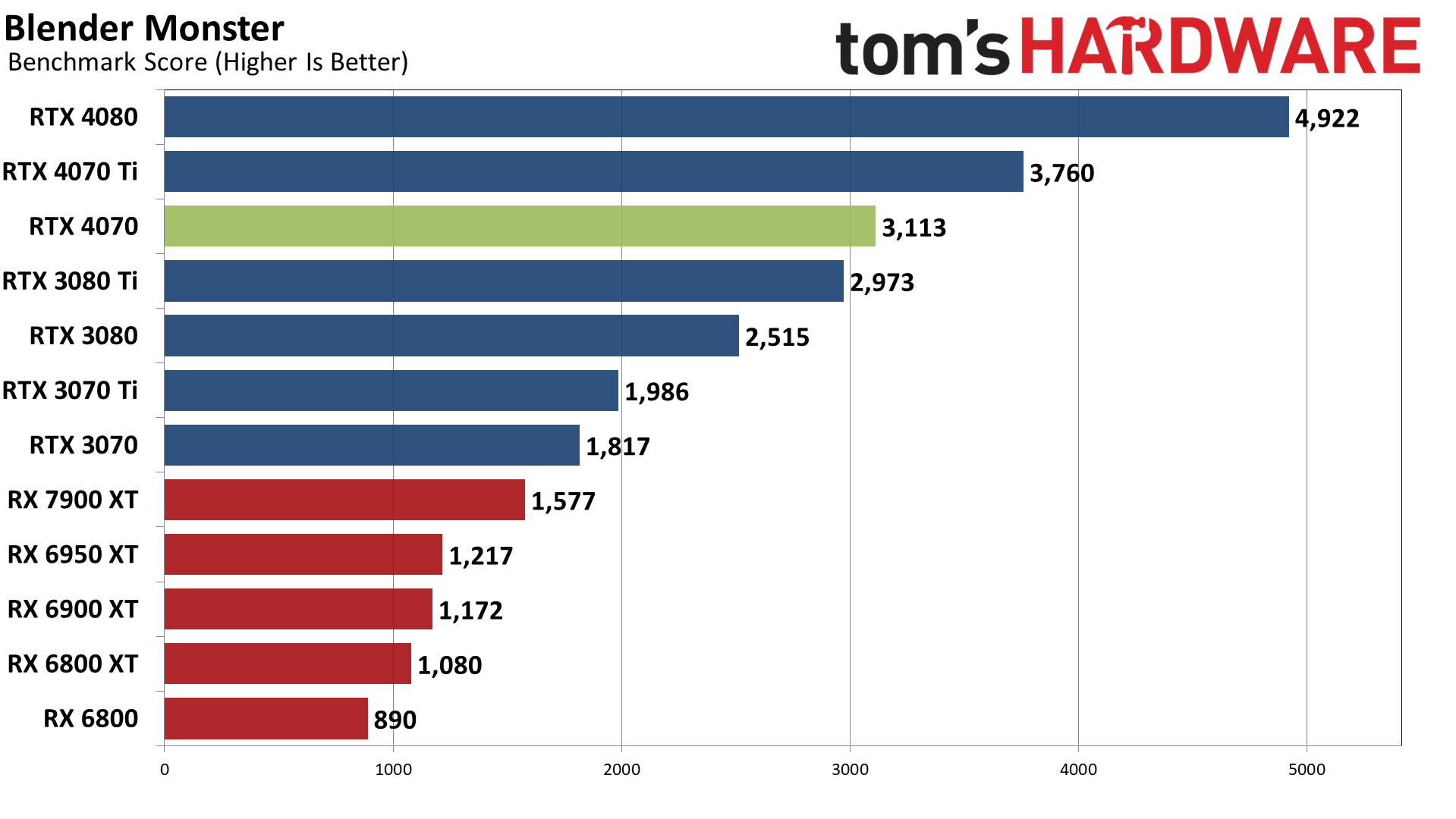
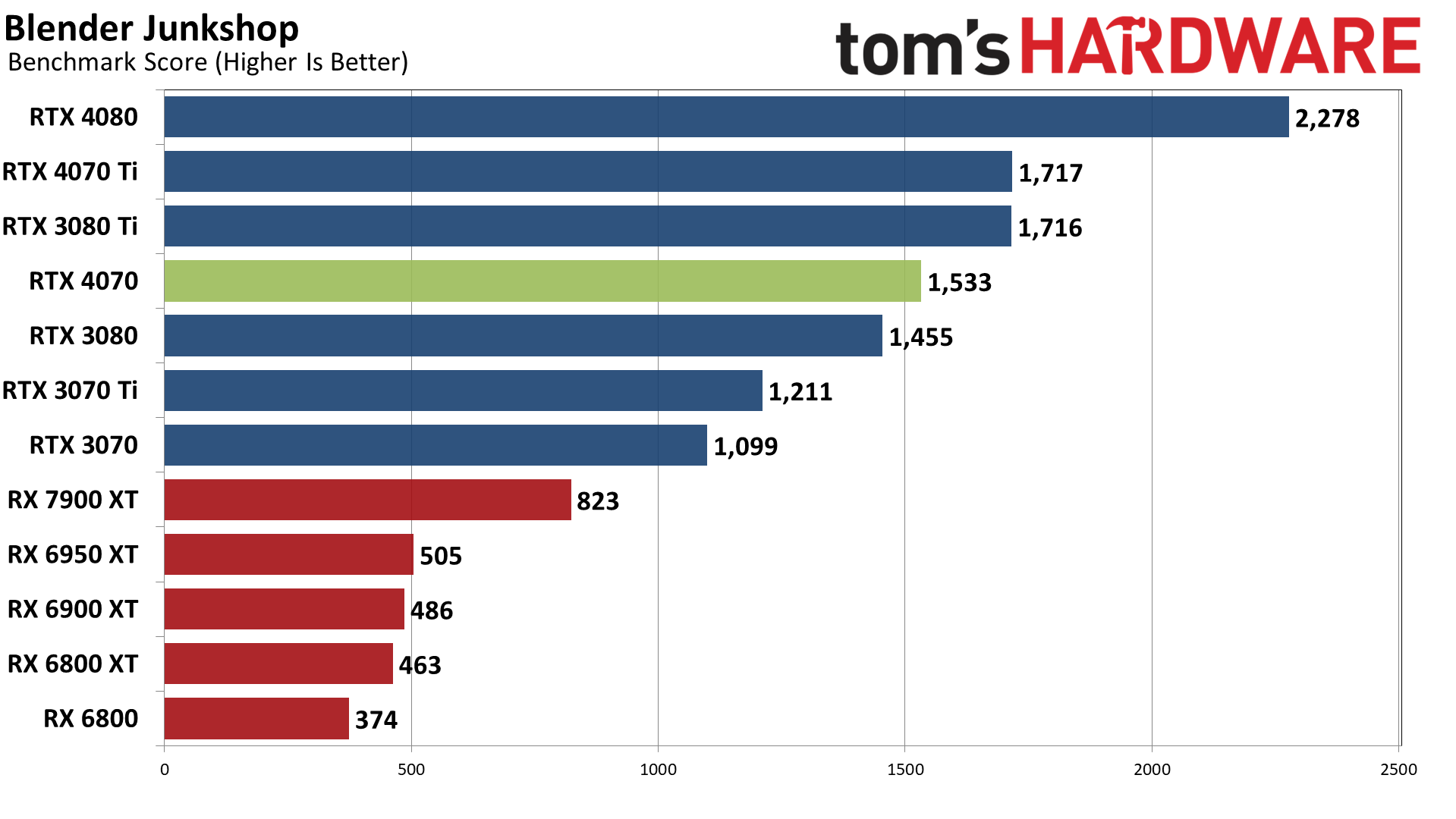
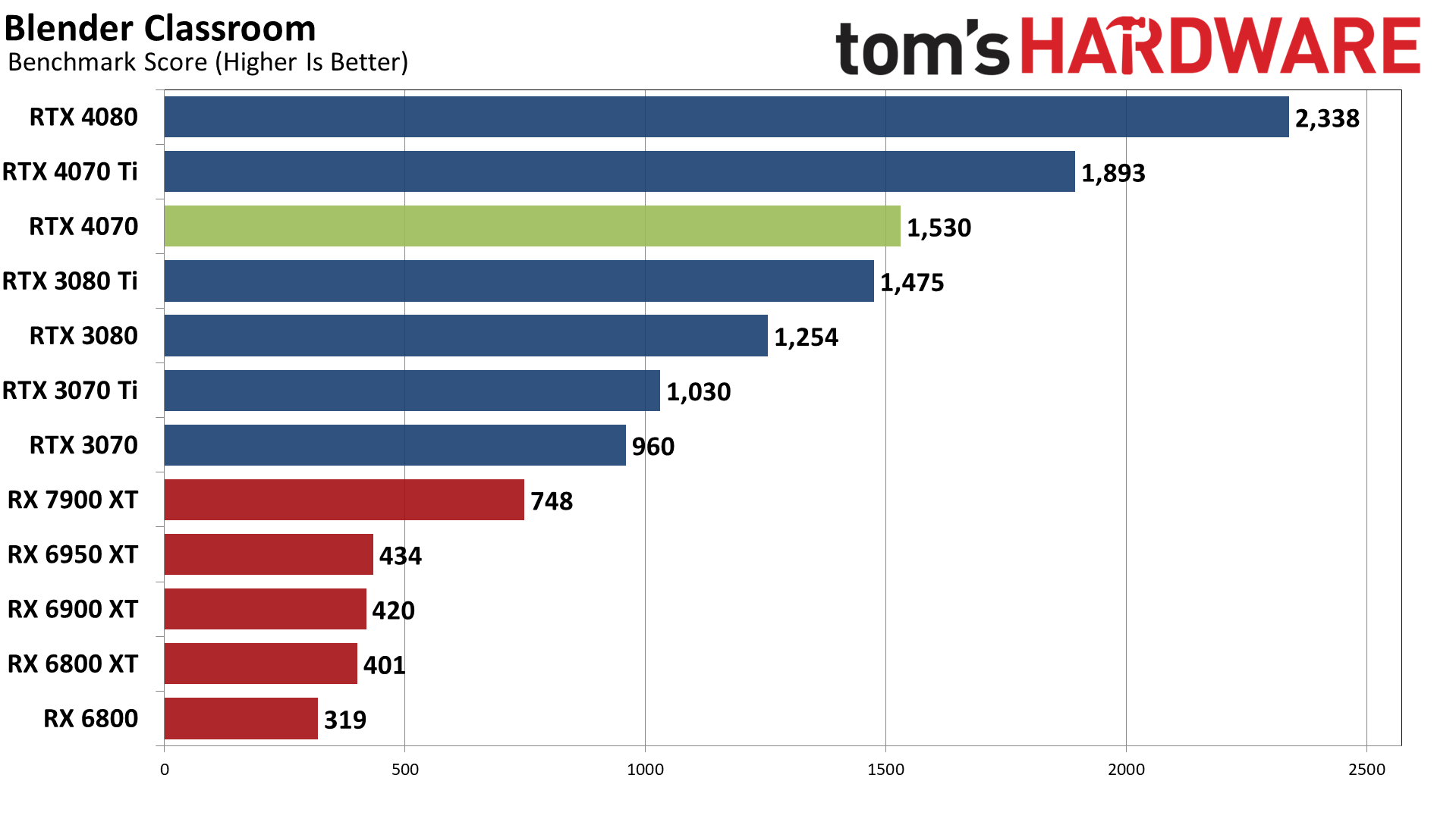
Moving on to 3D rendering, Blender is a popular open-source rendering application, and we're using the latest Blender Benchmark, which uses Blender 3.50 and three tests. Blender 3.50 includes the Cycles X engine that leverages ray tracing hardware on AMD, Nvidia, and even Intel Arc GPUs. It does so via AMD's HIP interface (Heterogeneous-computing Interface for Portability), Nvidia's CUDA or OptiX APIs, and Intel's OneAPI — which means Nvidia GPUs have some performance advantages due to the OptiX API.
The RTX 4070 ends up basically tied with the 3080 Ti this time, winning in two of three individual scenes as well as in the aggregate score. It's interesting that Junkshop seems to favor the 3080 Ti, but we don't have any clear indication why that might be so. AMD's GPUs meanwhile fall far behind, and even the RTX 3070 delivers better performance in our testing.

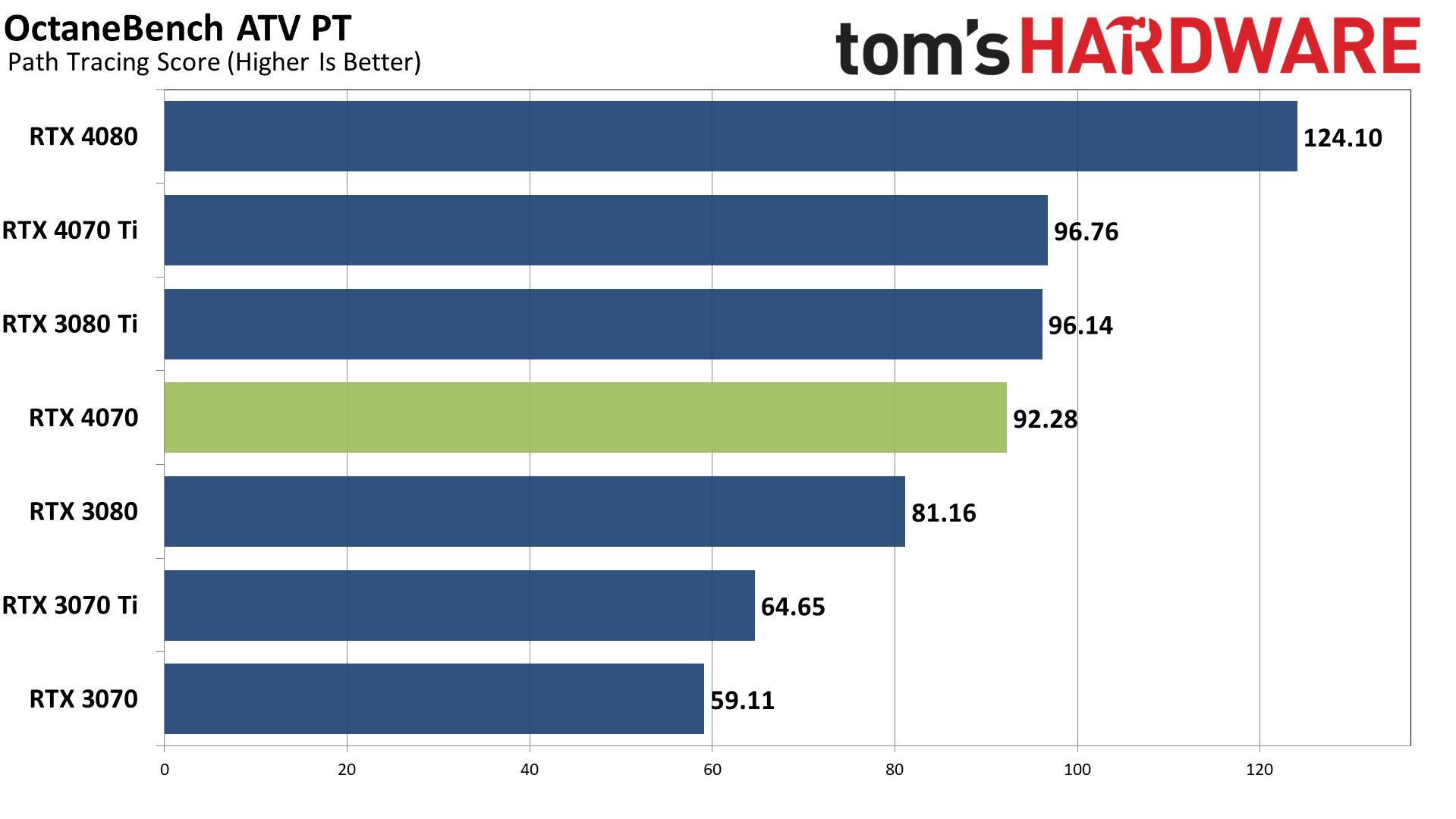
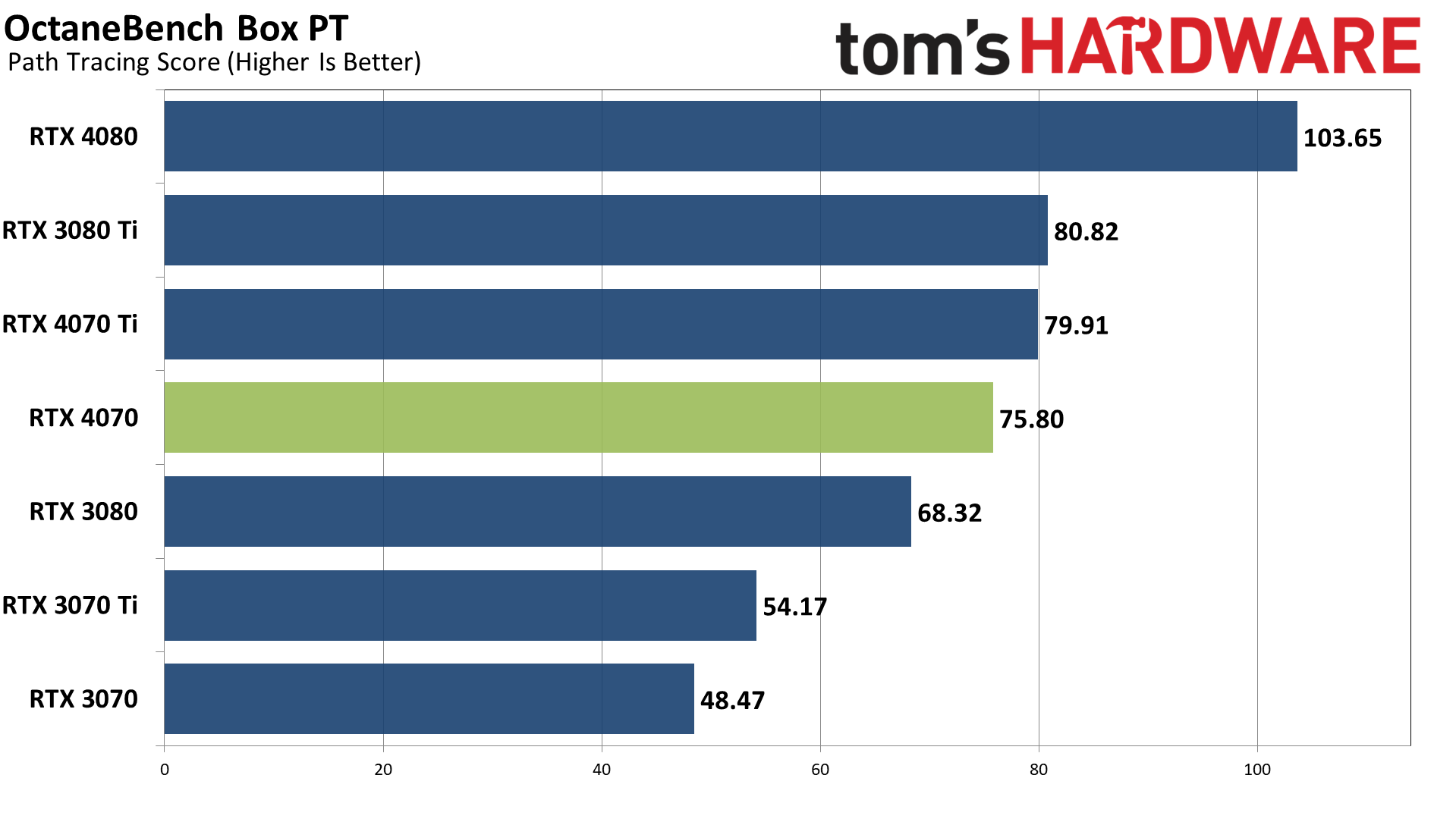
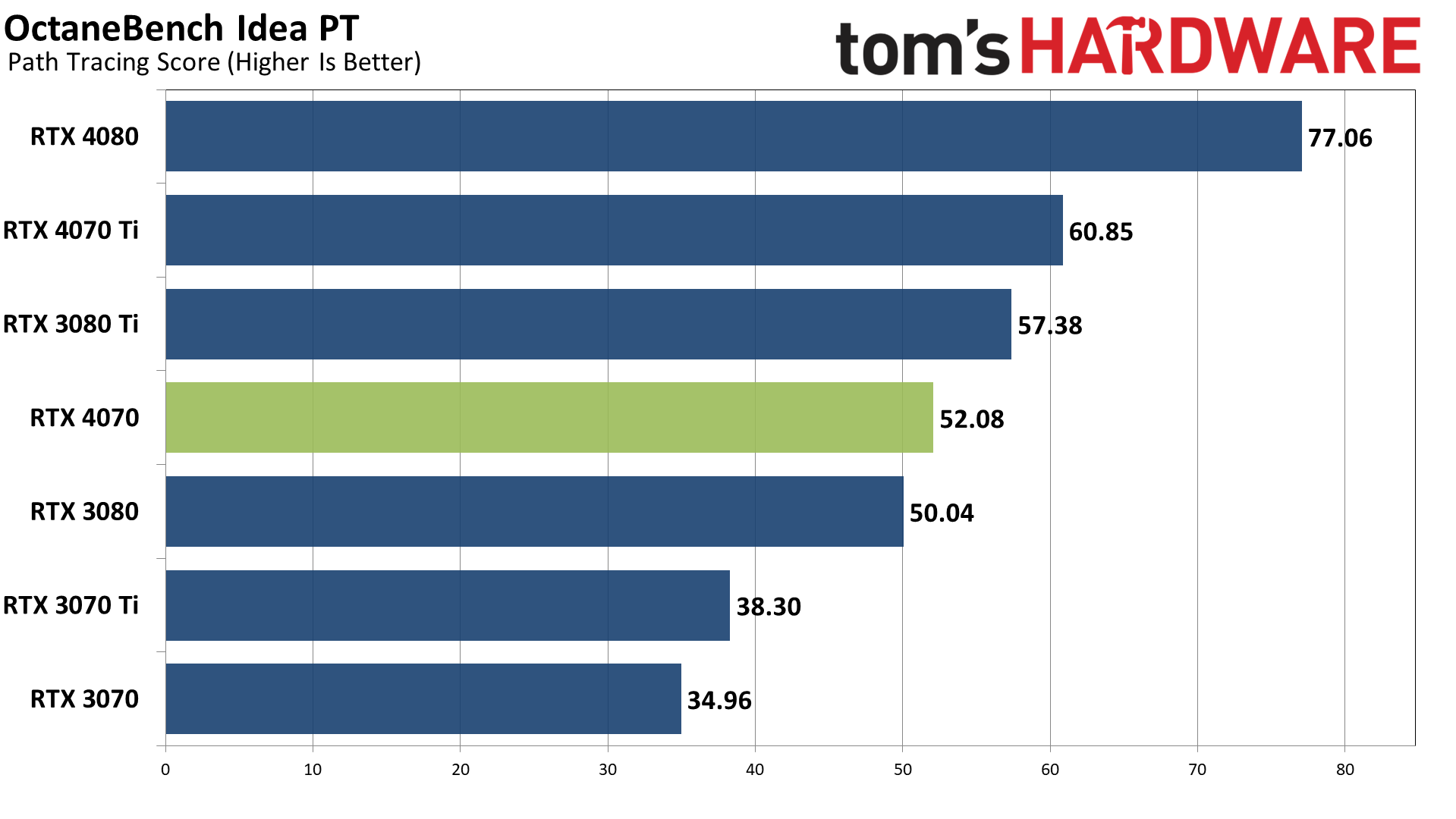

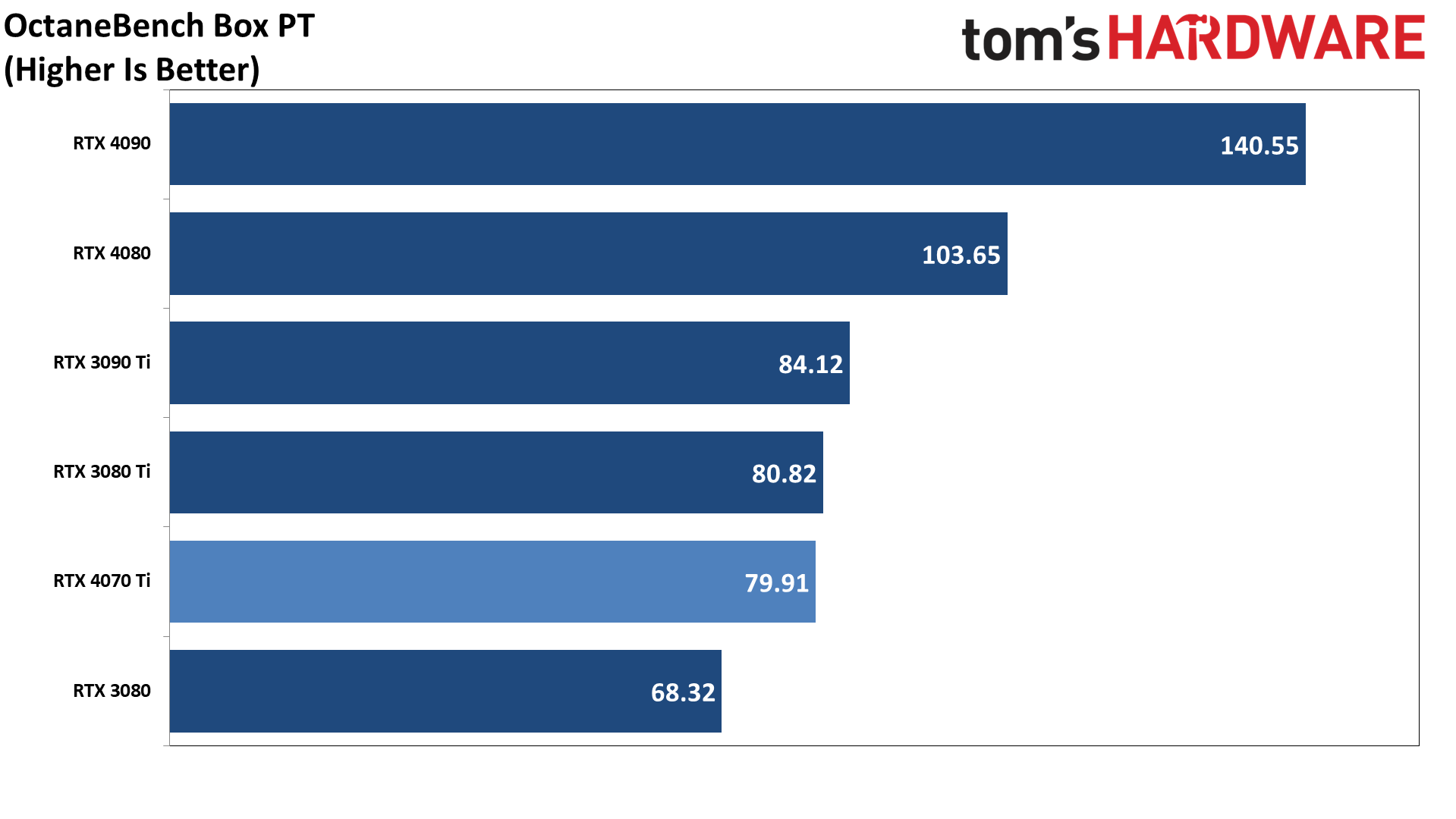
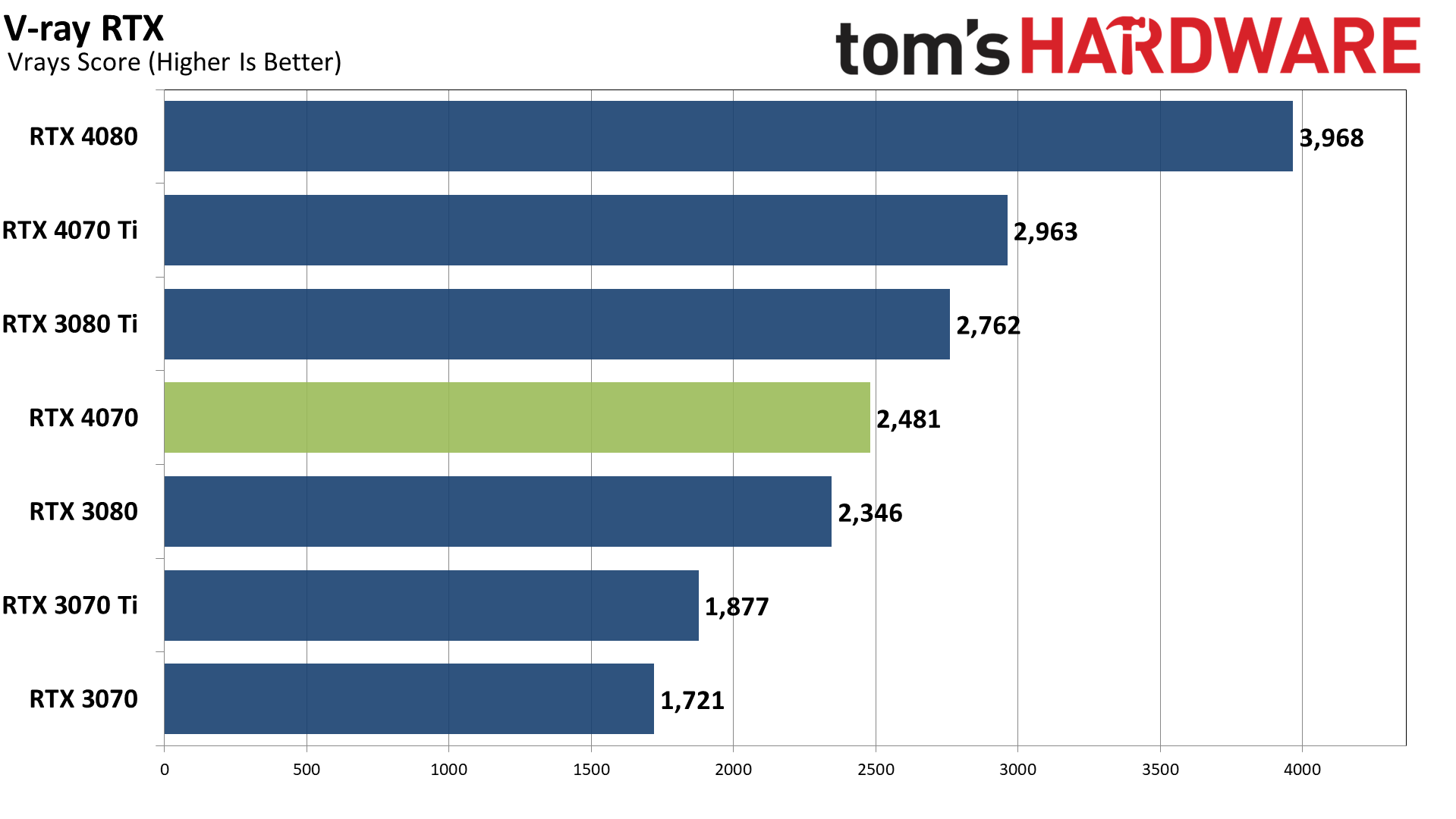
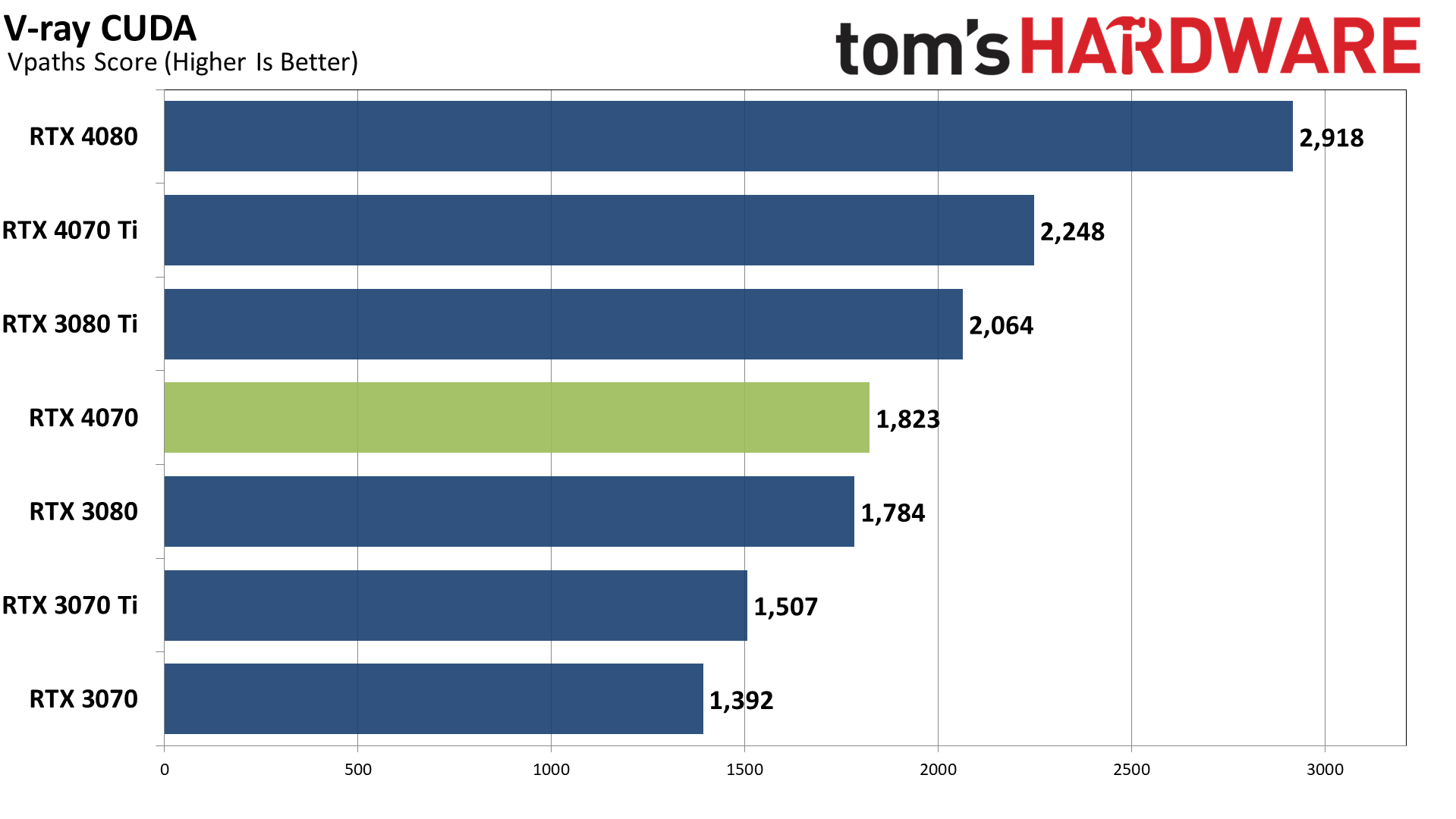
Our final two professional applications only have ray tracing hardware support for Nvidia's GPUs. OctaneBench pegs the RTX 4070 as being just a touch behind the RTX 3080 Ti but decently ahead of the vanilla RTX 3080. V-ray goes the other route and puts performance just barely ahead of the 3080 but a decent amount behind the 3080 Ti.
- MORE: Best Graphics Cards
- MORE: GPU Benchmarks and Hierarchy
- MORE: All Graphics Content
Get Tom's Hardware's best news and in-depth reviews, straight to your inbox.
Current page: GeForce RTX 4070: Professional Content Creation and AI Performance
Prev Page GeForce RTX 4070: DLSS 2, DLSS3, and FSR 2 Upscaling Next Page GeForce RTX 4070: Power, Clocks, Temps, Fans, and Noise
Jarred Walton is a senior editor at Tom's Hardware focusing on everything GPU. He has been working as a tech journalist since 2004, writing for AnandTech, Maximum PC, and PC Gamer. From the first S3 Virge '3D decelerators' to today's GPUs, Jarred keeps up with all the latest graphics trends and is the one to ask about game performance.
-
Elusive Ruse If there were no previous gen high-end GPUs available this would be a good buy but at this price you can just buy a new AIB 6950XT.Reply -
PlaneInTheSky So it offers similar performance to the 3080 and launches at an only slightly lower MSRP.Reply
Going by price leaks of some AIB, we will be lucky if we're not going backwards in price / performance.
In 2 years time since the 3080, performance per $ has barely increased.
The 12GB VRAM is depressing too, considering a RX 6950XT offers 16GB for the same price.
DLSS 3.0 doesn't interest me in the slightest since it's just glorified frame interpolation that does nothing to help responsiveness, it actually adds lag.
It's hard to get excited about PC Gaming when it is in such a terrible state. -
PlaneInTheSky In Europe, price/performance of Nvidia GPU generation-generation has basically flatlined now.Reply
3080 MSRP: €699
4070 MSRP: €669
That's the state PC gaming is in now. In 2 years time, no improvement in price/performance.
It is a good example of what happens in a duopoly market without competition. -
peachpuff Reply
That's really sad, how many gold plated leather jackets does jensen really need?PlaneInTheSky said:In 2 years time since the 3080, performance per $ has barely increased.
-
DSzymborski The 4070 is releasing at a significantly lower price than the 3080. $699 in September 2020 is $810 in March 2023 dollars. $200 over the 4070 MSRP of $599 is a significant amount. Now, few 4070s will be available at $599, but then few 3080s were actually available at $699 (which, again, is $810 in current dollars).Reply
The 3070 was released at an MSRP of $499, which is $578 in March 2023 dollars. -
Exphius_Mortum Title of the article needs a little adjustment, it should read as followsReply
Nvidia GeForce RTX 4070 Review: Mainstream Ada Arrives at Enthusiast Pricing -
Elusive Ruse @JarredWaltonGPU thanks for the review, I saw that you retested all the GPUs with recent drivers which must have taken a huge effort (y)Reply
PS: Are you planning to add or replace some older titles with new games for future benchmarks? -
btmedic04 Hey look, a 1.65% performance improvement per 1% more money card when compared to the 3070. It's disappointing that's where we are at with gpus these daysReply -
healthy Pro-teen Reply
A duopoly at best, it's almost a monopoly. AMD will probably undercut it by a small amount, get middling reviews and then heavily discount the GPU only when most people have already decided on the 4070. 6950XT is discounted right now and offers better value and the average gamer doesn't know it, so 4070 will sell regardless.PlaneInTheSky said:In Europe, price/performance of Nvidia GPU generation-generation has basically flatlined now.
3080 MSRP: €699
4070 MSRP: €669
That's the state PC gaming is in now. In 2 years time, no improvement in price/performance.
It is a good example of what happens in a duopoly market without competition.
